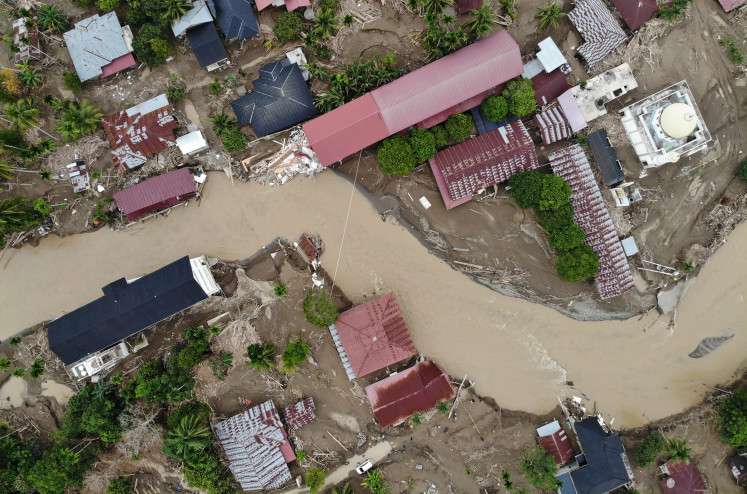Popular Reads
Top Results
Can't find what you're looking for?
View all search resultsPopular Reads
Top Results
Can't find what you're looking for?
View all search resultsHydrogen the missing piece of ASEAN green energy
Hydrogen is a potential game changer in efforts to decarbonize global emissions in all sectors. Other RE sources can be fully developed once hydrogen has been widely adopted.
Change text size
Gift Premium Articles
to Anyone
R
ecent international headlines have been declaring the potential of hydrogen to solve some of the key issues that limit the development of renewable energy (RE) and the goal of decarbonization of emissions.
The Wall Street Journal calls it the “new wonder fuel”. The BBC refers to a hydrogen “tech revolution” and Forbes says it “may be the crucial ‘jigsaw’ piece for green microgrids.” In short, hydrogen will be an option to mitigate CO2 emissions in the future. So how can this potential be applied by ASEAN?
ASEAN’s current power generation mix is dominated by coal, gas, and hydropower. However, solar and wind power comprise the most abundant energy resources in ASEAN but contribute negligent amounts (1.5 percent in 2015 and 2.4 percent in 2020) to the power mix. An optimistic outlook estimates that the shares of wind and solar power will increase by about 11 percent by 2040.
Many ASEAN grid operators hold misperceptions about renewable energy, although the production cost of RE such as solar and wind has dropped dramatically in recent years. Its share in the power generation mix remains small at 2.4 percent in 2020 (ERIA, 2019). The misperceptions about RE’s stem from its variable and intermittent nature, which adds higher costs to grid systems because it requires backup capacity from conventional gas power plants (NREL, 2020).
The ASEAN power grid is making slow progress and an integrated ASEAN power market may remain unrealized for several reasons including regulatory and technical harmonization issues between ASEAN power grids and utilities. Thus, scalable electricity production from wind and solar faces tremendous challenges due to current practices of system integration in ASEAN. Investors in solar or wind farms will face high risks from electricity curtailment if surplus electricity is not used.
Recently, many countries have developed technologies for battery storage (Lithium-ion batteries) to handle surplus electricity production from wind, solar, and hydropower but battery storage remains costly.
However, hydrogen produced from electrolysis using surplus electricity (including surplus electricity from fossil fuels that apply carbon capture, utilization and storage or CCUS) has many advantages that complement battery storage, as hydrogen can be stored as liquid gas which is suitable for uses in many sectors and is easy to transport.


















